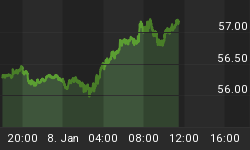Warren Buffett, a former student and employee of value-investing pioneer Benjamin Graham, commented recently on how expensive the overall stock market is currently. One of the metrics Buffett uses to describe the valuation of stocks is to compare the market value of stocks to the size of the U.S. economy. The metric used to measure the size of the economy is the Gross Domestic Product (GDP). Sometimes Mr. Market bids up stock prices to lofty levels relative to GDP, and at other times stocks become depressed relative to the size of the overall economy. This valuation ratio is not a short-term market-timing tool, but it does provide guidance as to whether returns will be above or below the average over the longer term.
The chart below illustrates the performance of the S&P 500 at different valuation levels. As the overall stock market becomes more expensive relative to the size of the U.S. economy (GDP), average annual returns over the next 5 years trend lower. The current reading on the stock-market-value-to-GDP ratio is currently more than 100%. Historically, this has not been the greatest entry point for someone putting new money to work in a broadly diversified stock fund, even one that charges low fees.

Unlike the S&P 500 Index, the disappointing stock performance at lofty valuation levels does not seem to be the case if one follows Benjamin Graham's rule for enterprising investors by only purchasing stocks trading below net current asset value.
Net current asset value (NCAV) is a simple calculation used to describe the minimum liquidation value of a firm. The calculation is made by subtracting all liabilities -- including preferred stock -- from the most liquid assets on a company's balance sheet and converting the figure to a per-share basis. If a company is found trading below net current asset value, the performance of these out-of-favor stocks is excellent. The chart below assumes an investor puts no more than 10% in any one stock trading below 75% of net current asset value and holds the stock for a 5-year period. Using Buffett's favorite indicator for overall stock valuation, even when stocks are lofty in price relative to GDP, the performance of net current asset value stocks holds up.

Why is it that stocks trading below net current asset value outperform even during time periods when the overall market is expensive? One reason is the superior selection criterion of investing in stocks trading below liquidation value. The other reason is having the discipline to let some funds sit idle during time periods when the stock market is expensive. There are fewer stocks trading below net current asset value when the market is at an extreme high relative to GDP. By restricting purchases to no more than 10% in any one stock, our net current asset value portfolio sat partially in Treasury Bills more than half the time when the stock- market-to-GDP ratio was more than 100%.
Many investors feel a psychological comfort in joining the collective conscious and purchasing stocks when everyone else seems to be buying. Those time periods seem to coincide with lofty stock valuations. During time periods when stocks are expensive, investors embracing a value investment philosophy are tempted to relax their buying criterion and load up on stocks. Having a portion of your funds sitting on the sidelines, waiting for more stocks to trade below liquidation value is hard to do when stocks continue to bubble higher. The illustration above shows that investors who can discipline themselves to remain partially in low-interest-bearing Treasury Bills when stocks are expensive can still do well over the long term in terms of portfolio performance.
Enterprising investors should avoid the temptation to purchase stocks trading at a higher valuation than net current asset value, regardless of where the overall market is trading relative to GDP. When stocks are expensive relative to GDP, spending time pursuing other activities might be more productive than abandoning the strict value-investing criterion and wandering into the area of pure stock speculation.
















